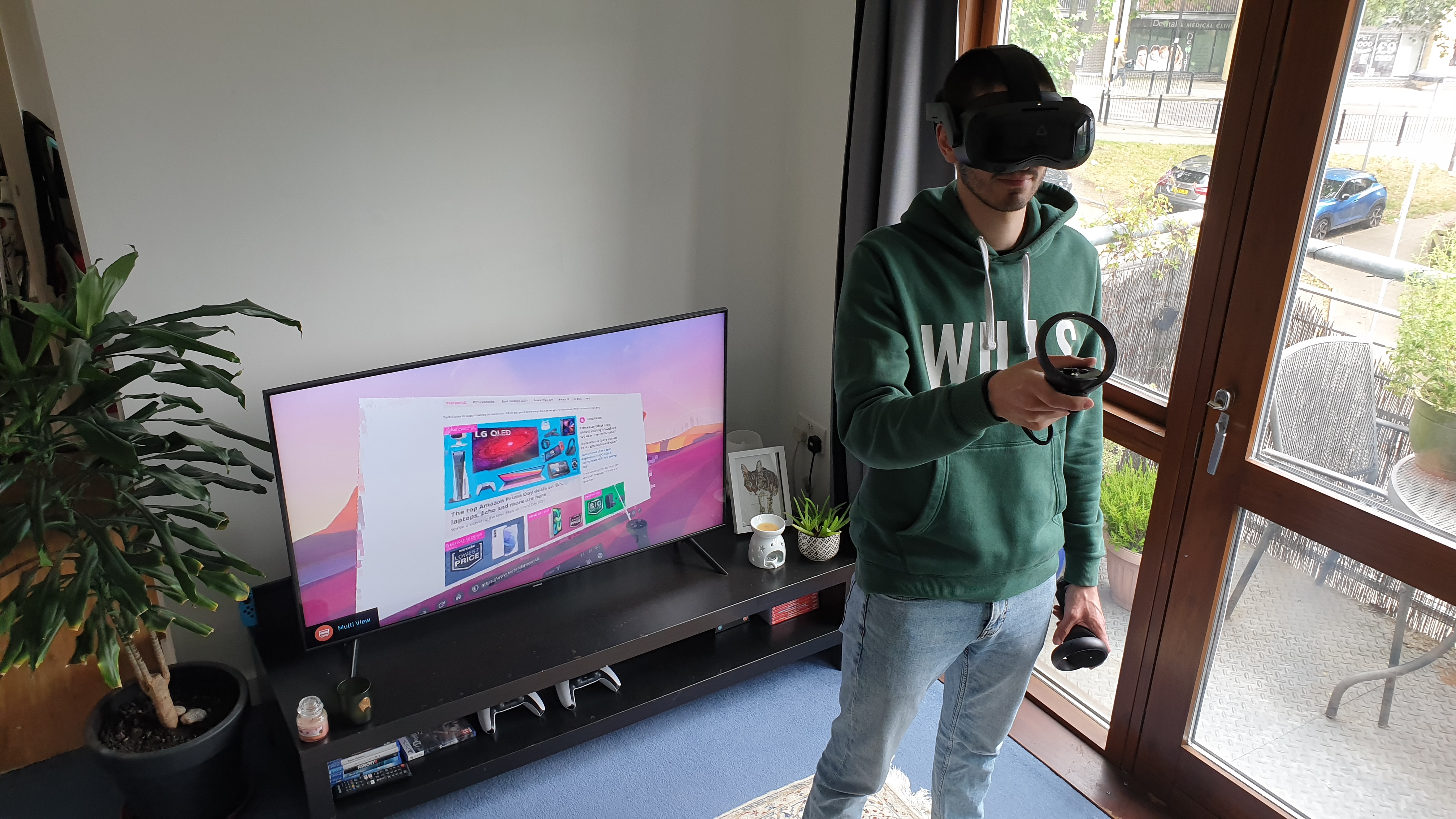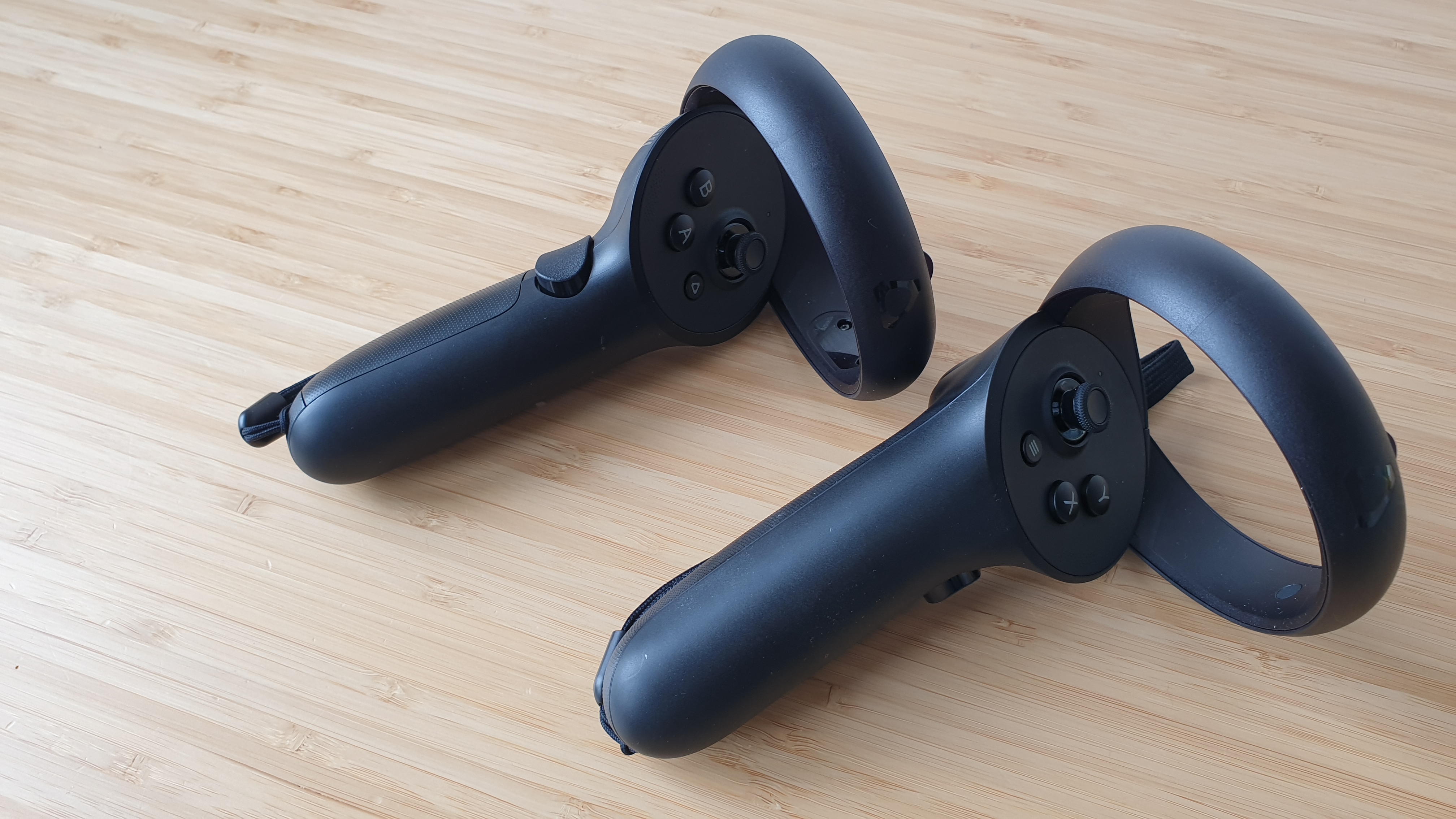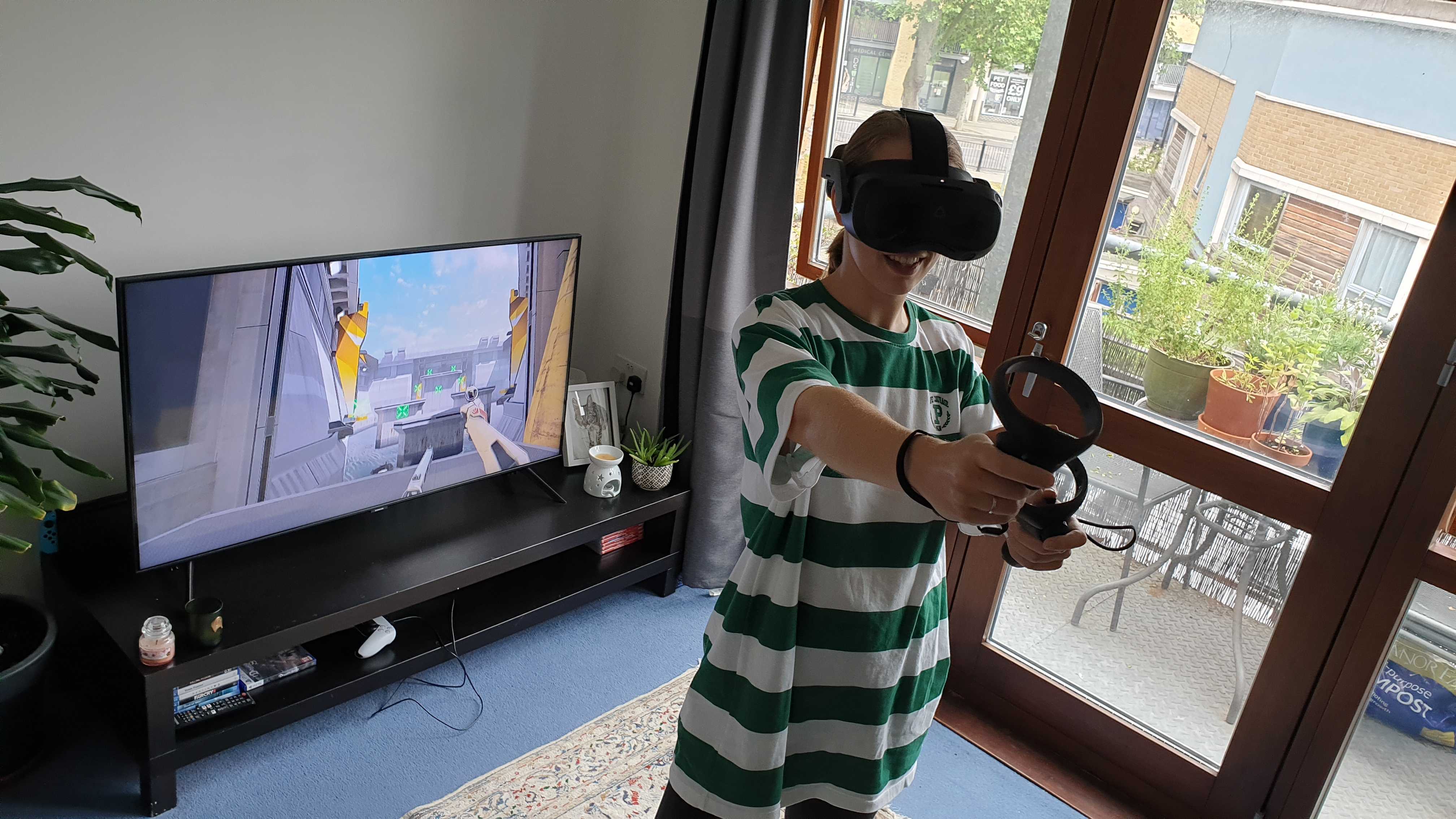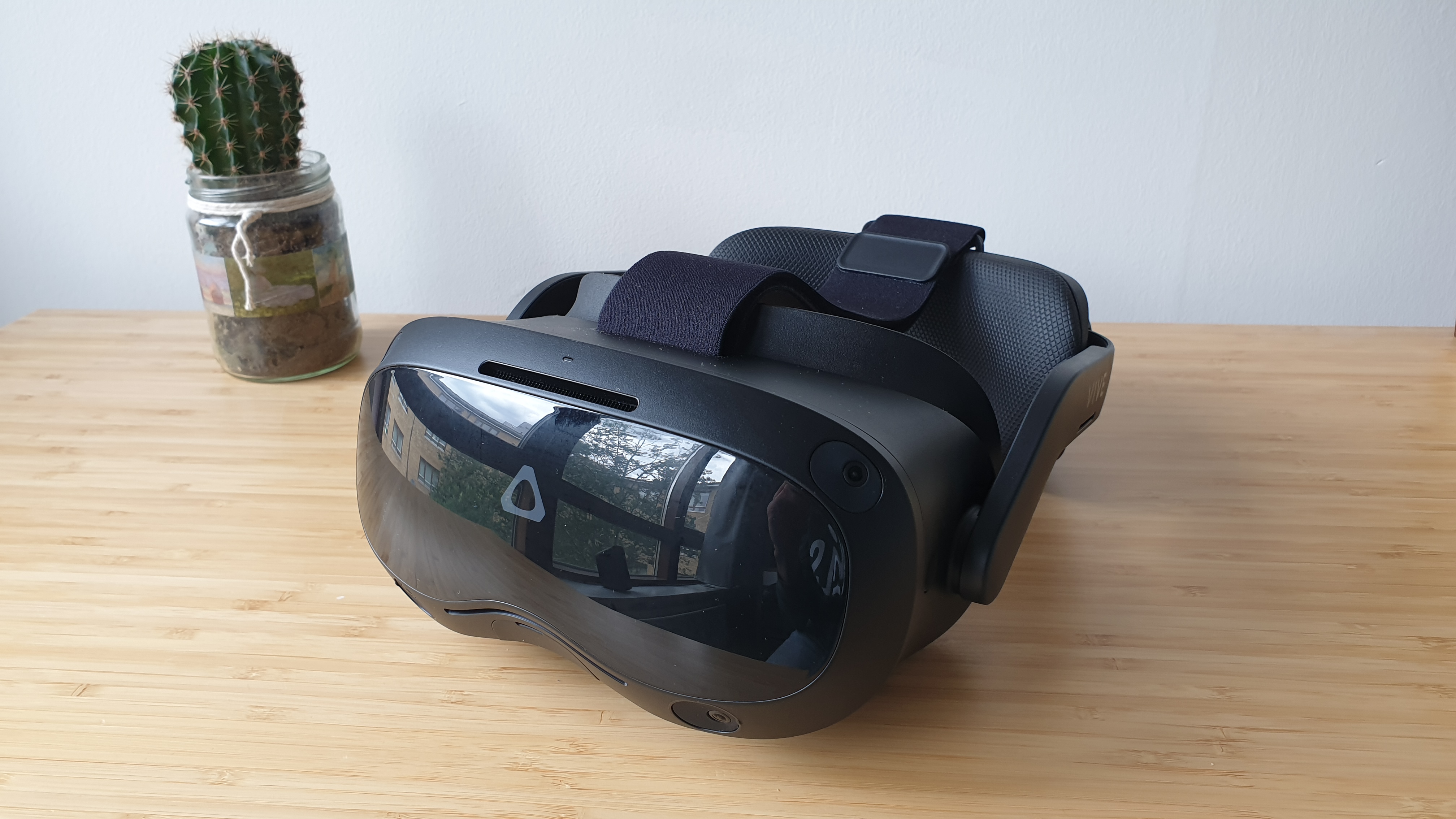TechRadar Verdict
The business-centric HTC Vive Focus 3 sets a new benchmark for all-in-one VR, with a smart design and some mouth-watering specs. However, the odd performance dip reminds us that balancing performance and accessibility is not an easy task.
Pros
- +
Beautiful screen
- +
Easy set-up
- +
Light and comfortable
Cons
- -
Expensive
- -
Performance blips
- -
Noisy
Why you can trust TechRadar
The Vive Focus 3 is the latest all-in-one virtual reality (VR) headset from HTC, successor to the Vive Focus Plus, and it’s quite something to behold.
It has a spec sheet to rival the previous generation of PC-powered headsets, with a combined 5K resolution across dual screens, 90hz refresh rate and 120 degree field of view (FOV). And yet, like its predecessor, the Vive Focus 3 is totally wireless, with all tracking and computing handled onboard.
The screen is remarkably crisp and the performance smooth, but for a few dips here and there. And HTC has managed to eliminate some of the nausea-inducing visual quirks that have afflicted all-in-one headsets in the past.
Although inside-out tracking is inferior to lighthouse-based systems (you cannot perform actions with the controller behind your back, for instance), it’s a price we were happy to pay for greater portability, simple setup and unrivalled ease of use.

The Vive Focus 3 headset is also easy on the eye and, thanks to its lightweight chassis and carefully balanced design, is comfortable to wear for long periods of time. The magnetic face gasket and padding is a nice touch too, making for easy replacement and cleaning.
Just note, it may take you a few tries to get the fit just right, especially if you wear glasses. Unless the headset is positioned just so, and with the correct inter pupillary distance (IPD), you’ll encounter some nasty blur.
At face value, this might seem like a rival to the Quest 2, the standalone headset from Oculus, but the two operate in different arenas entirely. The Quest is a launch pad for anyone looking to dip a toe in virtual reality, but HTC’s new headset is aimed squarely at the business market. So if you’re after a gaming headset, you’ll want to look elsewhere.
Sign up to the TechRadar Pro newsletter to get all the top news, opinion, features and guidance your business needs to succeed!
Price and availability
The Vive Focus 3 does not come cheap, but that’s not entirely unexpected given this is a business VR headset.
The device is available from June 27 at a cost of $1,300/£1,272/€1,404 excluding VAT. This price includes the headset, two controllers, an AC adapter, splitter cable and lens cleaning cloth.
In the event of a breakage, spare controllers can also be purchased for $149/£149/€159 each.
Design
It’s difficult to make virtual reality headsets look svelte, but HTC does just about the best job possible. The Vive Focus 3 is certainly more of a looker than its predecessor.
The black magnesium alloy chassis is just the right amount of curvaceous and pairs nicely with the faux-leather face gasket and padding to create a smart business aesthetic; the antithesis of the porcelain white Focus Plus.
Screen: Dual 2.88-inch LCD panels
Resolution: 2448 x 2448 px per eye (4896 x 2448 combined)
Refresh rate: 90hz
Chip: Custom-built Qualcomm Snapdragon XR2
FOV: 120 degrees
Tracking: Inside-out 6DOF tracking
IPD: 57-72mm
Battery: 26.6Wh
Audio: 2x dual driver speakers, dual microphones
Connectivity: 2x USB 3.2 Gen-1 Type C, Bluetooth 5.2, Wi-Fi 6
The new model is much lighter than the previous iteration (by roughly 20%), which will be a relief to anyone who has used a battery-powered VR headset. Yet despite its weight, the device also feels suitably sturdy, which will be important for use cases that require multiple people to share.
This lightweight build means the Focus 3 is comfortable to wear for extended periods of time, unlike many headsets on the market. HTC has also improved the weight distribution to prevent strain on the neck, positioning the battery behind the head as a counterbalance.
The most significant problem we encountered was nailing the fit, especially with glasses on. Unless the head strap and padding are tightened just so and the IPD tuned correctly, you’re going to encounter some disorienting blur.

Also standing in the way of a marathon session is battery life; we found the Focus 3 ran dry after a few hours of use. However, the ease with which a new one can be swapped in means a quick changeover in the interval between meetings is a possibility. If only the headset came with multiple batteries included!
The Focus 3 comes bundled with a pair of new infrared controllers, which do away with the trackpad in favor of a traditional joystick and buttons. The joystick in particular is a welcome addition, providing a more familiar alternative to teleportation as a means of moving around the virtual world.
The controllers are lightweight and comfortable in the hand, and the various buttons and triggers are tactile and satisfying. The arrangement of the buttons and joystick make everything easy to reach, unlike the side button on the Vive Pro controllers, for instance.
The Focus 3 controllers are also rechargeable via USB-C, addressing a common complaint with the previous AAA battery-powered iteration.

Set-up
When it comes to set-up, the Vive Focus 3 is a breath of fresh air, especially if you’re used to PC-tethered VR headsets.
There’s no wrestling with cabling or wall-mounting tracking lighthouses; it’s as simple as popping on the headset and marking out a play zone. The only thing you have to remember is to make sure the headset and controllers have plenty of charge.
It’s a little frustrating to have to recalibrate the floor and re-mark the play zone every time you use the headset, even if you’re in the same location, but this isn’t a massive hassle.
HTC says the software will soon be updated to allow users to save three different rooms, removing the need to repeatedly re-draw the boundary.
This process is also made easier by a passthrough mode that serves up a live feed of the real-life room. This helps to improve the accuracy of boundary setup and, in turn, minimize the likelihood of a collision that could damage either yourself or the VR set.
The largest room-scale play zone possible is 7 x 7m, whereas the headset can be used in seated or standing mode with just 1 x 1m of clear space.
Performance
Although the Vive Focus 3 will handle some games quite comfortably (we found a multiplayer FPS title called Hyper Dash ran smoothly enough), HTC has been very clear in its ambitions for the new headset.
The Focus 3 is built specifically to fill the gap in the market for a business VR headset that’s accessible and durable, but also offers top-tier performance for corporate use cases (e.g. 3D modelling).
Powered by a custom version of the Qualcomm Snapdragon XR2 platform, pushed to its max by a 15W copper heat pipe and high-performance fan, the Focus 3 achieves quite startling levels of performance and fidelity for an all-in-one headset.
The 5K resolution (2448 x 2448 px per eye) and 90hz refresh rate make for a buttery smooth experience, while the wide 120 degree FOV feels much more natural. The upgrade on previous generations is perhaps most noticeable when it comes to reading small text, which was all but impossible until now.

Not too long ago, it was unthinkable that any decent VR headset could operate wirelessly, without the assistance of a top-of-the-range PC, so the Vive Focus 3 is something of a marvel.
The main caveat is that this level of performance is not maintained 100% of the time. Strangely, we encountered issues most frequently in the lobby area, Virtual Reality System 2.0. Here, we were occasionally hit with nasty frame-rate dip and screen-tearing, especially when returning from an application.
We encountered further performance blips when casting content to a nearby screen, a feature businesses are likely to want to use at trade shows or during training sessions. While the feed was smooth for the most part, it also suffered from some pretty egregious lag on occasion.
The whirring of the fan is also disconcertingly loud when running certain apps, although this is less of a problem if you’re pushing the audio through a set of headphones. If you’re an audiophile, this approach is certainly recommended, because the in-built speakers are predictably tinny and lacking in bass.
It’s also worth noting that content can be streamed to the headset from PC, for use cases that require extensive simulation. However, the review model was not set up to test out this functionality.

Final verdict
The Vive Focus 3 is an undeniably impressive piece of technology that addresses many of the issues that have hampered virtual reality headsets since they came to market. It’s light and comfortable, setup is quick and simple and the screen is beautiful.
That said, we were disappointed to encounter performance glitches here and there, especially in the main lobby area. Although HTC has put plenty of effort into improving the resolution and frame rate to minimize unpleasant side-effects (such as nausea and headaches), patchy performance is a blot on the copy book.
Inevitably, the hefty price tag will also prove a sticking point, reducing the audience to a subset of companies with the deepest pockets. But for industries such as architecture or healthcare that could find purpose for a high-quality headset built for intensive use, there’s nothing out there to rival the Vive Focus 3 right now.
- Here's our list of the best video conferencing services around

Joel Khalili is the News and Features Editor at TechRadar Pro, covering cybersecurity, data privacy, cloud, AI, blockchain, internet infrastructure, 5G, data storage and computing. He's responsible for curating our news content, as well as commissioning and producing features on the technologies that are transforming the way the world does business.
